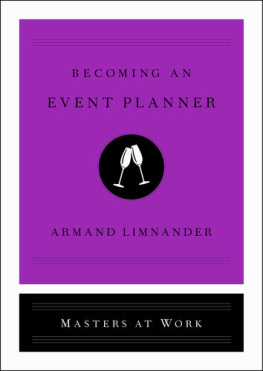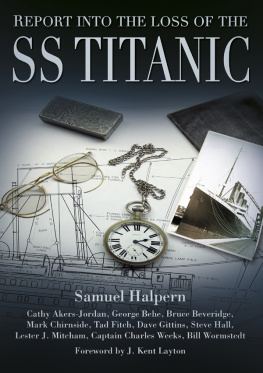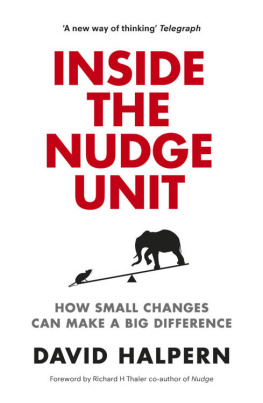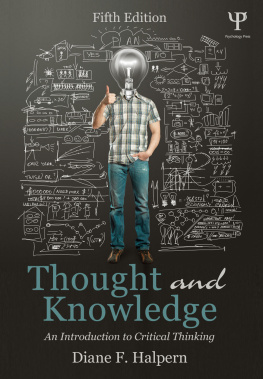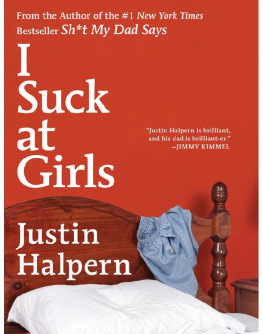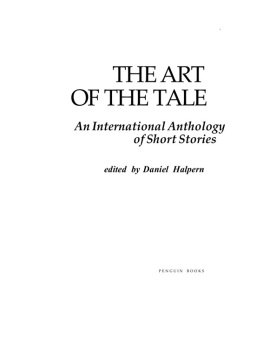Dan Halpern - Not for Bread Alone
Here you can read online Dan Halpern - Not for Bread Alone full text of the book (entire story) in english for free. Download pdf and epub, get meaning, cover and reviews about this ebook. year: 2011, genre: Children. Description of the work, (preface) as well as reviews are available. Best literature library LitArk.com created for fans of good reading and offers a wide selection of genres:
Romance novel
Science fiction
Adventure
Detective
Science
History
Home and family
Prose
Art
Politics
Computer
Non-fiction
Religion
Business
Children
Humor
Choose a favorite category and find really read worthwhile books. Enjoy immersion in the world of imagination, feel the emotions of the characters or learn something new for yourself, make an fascinating discovery.
- Book:Not for Bread Alone
- Author:
- Genre:
- Year:2011
- Rating:3 / 5
- Favourites:Add to favourites
- Your mark:
- 60
- 1
- 2
- 3
- 4
- 5
Not for Bread Alone: summary, description and annotation
We offer to read an annotation, description, summary or preface (depends on what the author of the book "Not for Bread Alone" wrote himself). If you haven't found the necessary information about the book — write in the comments, we will try to find it.
Not for Bread Alone — read online for free the complete book (whole text) full work
Below is the text of the book, divided by pages. System saving the place of the last page read, allows you to conveniently read the book "Not for Bread Alone" online for free, without having to search again every time where you left off. Put a bookmark, and you can go to the page where you finished reading at any time.
Font size:
Interval:
Bookmark:


NOT FOR BREAD ALONE
WRITERS ON FOOD, WINE, AND
THE ART OF EATING
Edited by
Daniel Halpern
Contents
/ The Underside of Bread: A Memoir with Food
/ To Carol Braiders Kitchen 68
the Persistence of Taboo
/ On Food 123
Roast Boned Rolled Stuffed Shoulder of Lamb (Farce Double) 139
Food as Gesture
There are ways to think about food and its preparation beyond its actual consumption: thus the essays in Not for Bread Alone: Writers on Food,Wine, and the Art of Eating. My idea was to put together a collection that celebrated both the nourishing (and necessary) act of eating, as well as that part that goes beyond merely eating to livethat is, the various social, anthropological, psychological, and philosophical gestures in the non-consuming aspects of food and rituals of eating. Eating our slice of daily bread, but not for the intake of that slice alone.
I entered the resplendent realm of cooking one very early Sunday morning in Seattle, circa 1952, at the age of six or seven, when I served eggs I had poached for an hour or two to my sleeping parents. I had watched my mother poach eggs and understood the technique perfectly: the poaching trays, the arrangement, the proper allotment of water.
However, the notion of time was yet to enter my burgeoning culinary repertoire. Even then, or especially then, it was gesture that made an impression on me: the act of serving the prepared to another.
But to me cooking did not truly matter until I used food to do my bidding in the court of women. It was the late sixties and I was undergoing a post-puberty period in Los Angeles, a Valley Boy living in a cheap but rustic apartment rented from Apache landlords in Laurel Canyon, just down the street from the log cabin, where Frank Zappa and The Mothers of Invention posted rent and held extravagant parties, where I turned up many of the young women I nourished during that time. My small kitchen had a square table with a plastic checkerboard tablecloth, two wicker chairs, and a view of what I liked to describe solemnly as deep forest. My intention was to give the view a kind of eerie mysteryto set my guests on edge, but to what end I now wonder?
I had rehearsed a number of good-looking, if moderately accomplished dishes, but settled on two that seemed to win for themselves the necessary regard. The meals began with spicy corn fritters. I served these with a little crme frache and,
depending on the intensity of my feelings, a splash of red lumpfish caviar. I followed with a leg of lamb, shank half, injected with garlic splinters and rubbed with olive oil and rosemary. And throughout, plenty of inexpensive zinfandel from Napa, finishing with a simple dessert that would not unduly prolong the evening.
A short time later, I found myself living in Tangier, Morocco, where I taught English and began cooking with a certain earnestness. I lived in the apartment below Paul Bowles, who served as a sort of post-graduate mentor to me. On our afternoon walks through the covered food markets of the Socco Grande, where we shopped for our dinners, we discussed music, literature, stateside gossip, and the mysterious Moroccan culture.
It was in Tangier that I was first seduced by the richness of the dark spicescumin, clove, cinnamon, turmeric, paprika, cardamomand one fresh herb in particular, kosbour (coriander), whose aroma still conjures up those intense, profuse, and honest markets, where nothing was masked or disguised.
Paul and I often ate together and one of the dishes he most enjoyed was a chickpea dish I made with my two favorite ingredients: cumin and coriander. We ate this with our favorite tagine, a stew of chicken rubbed with freshly ground cumin, prunes stewed with ginger, and onions sauted with cinnamon and topped with toasted almonds.
When I left Tangier for Italy, to visit my mother and sisters in Florence, Paul suggested I stop in Venice to see Peggy Guggenheim.
As her guest at the Guggenheim palazzo/museo, it came to pass that I had the opportunity to help her, using the few culinary skills I had managed to acquire. It was one of those languid, mid-summer days on the lagoons of Venice; we were looking at various obscure churches in the small back canals in her chauffeured gondola, talking about her support of Djuna Barnes, one the expatriate stars of the twenties, and of Italian food. She mentioned she had invited a number of friends to dinner, but was going to have to cancel because her chef had taken ill suddenly. Naturally, in a gesture of foolish generosity, I asked if I might help out by preparing a modest meal for her friends.
She and I then put together a list and, via gondola, shopped. This meant we went from hotel to hotel, where Peggy was friendly with the head chefs who happily supplied her.
2 / Daniel Halpern
An hour after the appointed hour, the guests began to arrive: local artists and politicians, exiled Brits and Americans, a banker, a beautiful Eastern European jeweller, and (Peggy had neglected to prepare me, a hopeful writer of verses), Ezra Pound. Later in the evening, after a quantity of Veneto red (an Amarone produced by Quintarelli), I reminded him that we had met once ten years earlier on a vaporetto plying through a rainy December night from San Marco to Accademia. I had asked, innocently, if he might be the poet Ezra Pound and he had replied, Nope, in perfect English, keeping things simple. He now said, quietly, Yes, but you see that wasnt me.
I prepared the meal. Red and yellow peppers stuffed with a pure of tuna and various aromatics and followed by simple but enthusiastic fusilli tossed with sausage and three kinds of tomatoes. For a meat dish, I grilled pork tenderloin (the kind that in this country comes packaged in cellophane) marinated, la Tangier, in a blizzard of brown spices.
To close, I presented with immodesty a local thigh-food specialty known as tiramisu.
Peggy told me the dinner was well-received. She knew by the invita-tions at meals endgesture for gesture. I left the next day after a lunch on her terrace overlooking the Grand Canal, sitting in the shadow of Brancusis Bird in Flight. As we ate (leftovers), Peggy told me the story of its painful acquisition from the artist himself. They had been seeing each other in a serious way, as Peggy put it. When the moment eventually arrived for them to break upwhich I gathered, from the stories she told me about her many close encounters with the most important men of the first half of this century, was something she got rather used toshe agreed to purchase his Bird in Flight. At the appointed hour, she went to fetch the piece. Brancusi came out of his house carrying it in his arms. I asked Peggy if it werent too heavy for him to carry alone and she replied, Oh no, he was an extremely strong man. And she added, You know, he had tears in his eyes, it was very moving. But to this day I dont know whether those tears were for me because I left him or because he was losing his beloved Bird in Flight. I like to think, these many years later (and given this context), their final encounter was like a last supper, bird in handbetrayed first by his love-in-flesh, who in turn robbed (albeit purchased) him of his love-in-silver, both now in flight.
But this is not the gesture I wish to end with. Not with a gesture of parting, but one of arrival. As in introduction. It is reported that Genghis
Next pageFont size:
Interval:
Bookmark:
Similar books «Not for Bread Alone»
Look at similar books to Not for Bread Alone. We have selected literature similar in name and meaning in the hope of providing readers with more options to find new, interesting, not yet read works.
Discussion, reviews of the book Not for Bread Alone and just readers' own opinions. Leave your comments, write what you think about the work, its meaning or the main characters. Specify what exactly you liked and what you didn't like, and why you think so.






